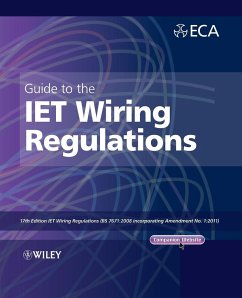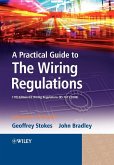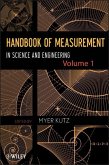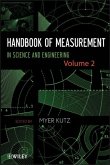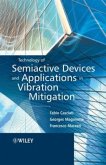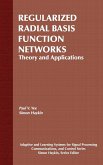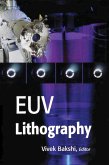Electrical Contractors' Association (Eca)Iet Wiring Regulations (Bs 7671:2008 Incorporating Amendment No 1:2011)
Guide to the Iet Wiring Regulations
Iet Wiring Regulations (Bs 7671:2008 Incorporating Amendment No 1:2011)
By Electrical Contractors' Association
Electrical Contractors' Association (Eca)Iet Wiring Regulations (Bs 7671:2008 Incorporating Amendment No 1:2011)
Guide to the Iet Wiring Regulations
Iet Wiring Regulations (Bs 7671:2008 Incorporating Amendment No 1:2011)
By Electrical Contractors' Association
- Broschiertes Buch
- Merkliste
- Auf die Merkliste
- Bewerten Bewerten
- Teilen
- Produkt teilen
- Produkterinnerung
- Produkterinnerung
This authoritative, best-selling guide has been extensively updated with the new technical requirements of the IET Wiring Regulations (BS 7671: 2008) Amendment No. 1:2011, also known as the IET Wiring Regulations 17th Edition. With clear description, it provides a practical interpretation of the amended regulations - effective January 2012 - offers real solutions to the problems that can occur in practice.
This revised edition features: new material on hot topics such as electromagnetic compatibility (EMC), harmonics, surge protective devices, and new special locations including medical…mehr
Andere Kunden interessierten sich auch für
![A Practical Guide to the Wiring Regulations A Practical Guide to the Wiring Regulations]() Geoffrey StokesA Practical Guide to the Wiring Regulations92,99 €
Geoffrey StokesA Practical Guide to the Wiring Regulations92,99 €![Handbook of Measurement in Science and Engineering, Volume 1 Handbook of Measurement in Science and Engineering, Volume 1]() Handbook of Measurement in Science and Engineering, Volume 1391,99 €
Handbook of Measurement in Science and Engineering, Volume 1391,99 €![Handbook of Measurement in Science and Engineering, Volume 2 Handbook of Measurement in Science and Engineering, Volume 2]() Handbook of Measurement in Science and Engineering, Volume 2555,99 €
Handbook of Measurement in Science and Engineering, Volume 2555,99 €![Technology of Semiactive Devices and Applications in Vibration Mitigation Technology of Semiactive Devices and Applications in Vibration Mitigation]() Fabio CasciatiTechnology of Semiactive Devices and Applications in Vibration Mitigation144,99 €
Fabio CasciatiTechnology of Semiactive Devices and Applications in Vibration Mitigation144,99 €![History of Wireless History of Wireless]() T. K. SarkarHistory of Wireless149,99 €
T. K. SarkarHistory of Wireless149,99 €![Regularized Radial Basis Function Networks Regularized Radial Basis Function Networks]() Paul V. YeeRegularized Radial Basis Function Networks176,99 €
Paul V. YeeRegularized Radial Basis Function Networks176,99 €![Euv Lithography Euv Lithography]() Vivek BakshiEuv Lithography135,99 €
Vivek BakshiEuv Lithography135,99 €-
-
-
This authoritative, best-selling guide has been extensively updated with the new technical requirements of the IET Wiring Regulations (BS 7671: 2008) Amendment No. 1:2011, also known as the IET Wiring Regulations 17th Edition. With clear description, it provides a practical interpretation of the amended regulations - effective January 2012 - offers real solutions to the problems that can occur in practice.
This revised edition features:
new material on hot topics such as electromagnetic compatibility (EMC), harmonics, surge protective devices, and new special locations including medical locations, and operative or maintenance gangways;
highlights the changes that have been made in this latest Amendment and their impact in practice;
examples of how to comply with the Wiring Regulations;
fully-integrated colour including sixty brand new colour illustrations, twenty tables and new high-quality photographs.
This essential guide retains its handy format, ideal for practicing electricians, trainee electricians and apprentices to carry with them for quick reference. It is a valuable resource for all users of BS 7671 who want to understand the background to the Regulations; electrical engineers and technicians, installation and design engineers, consulting and building services engineers, also dedicated inspectors and testers.
This revised edition features:
new material on hot topics such as electromagnetic compatibility (EMC), harmonics, surge protective devices, and new special locations including medical locations, and operative or maintenance gangways;
highlights the changes that have been made in this latest Amendment and their impact in practice;
examples of how to comply with the Wiring Regulations;
fully-integrated colour including sixty brand new colour illustrations, twenty tables and new high-quality photographs.
This essential guide retains its handy format, ideal for practicing electricians, trainee electricians and apprentices to carry with them for quick reference. It is a valuable resource for all users of BS 7671 who want to understand the background to the Regulations; electrical engineers and technicians, installation and design engineers, consulting and building services engineers, also dedicated inspectors and testers.
Produktdetails
- Produktdetails
- Verlag: Wiley & Sons
- 2. Aufl.
- Seitenzahl: 288
- Erscheinungstermin: 30. September 2013
- Englisch
- Abmessung: 235mm x 191mm x 15mm
- Gewicht: 542g
- ISBN-13: 9781119965145
- ISBN-10: 1119965144
- Artikelnr.: 36027857
- Herstellerkennzeichnung
- Libri GmbH
- Europaallee 1
- 36244 Bad Hersfeld
- gpsr@libri.de
- Verlag: Wiley & Sons
- 2. Aufl.
- Seitenzahl: 288
- Erscheinungstermin: 30. September 2013
- Englisch
- Abmessung: 235mm x 191mm x 15mm
- Gewicht: 542g
- ISBN-13: 9781119965145
- ISBN-10: 1119965144
- Artikelnr.: 36027857
- Herstellerkennzeichnung
- Libri GmbH
- Europaallee 1
- 36244 Bad Hersfeld
- gpsr@libri.de
Electrical Contractors' Association (ECA), ESCA House, London, UK The Electrical Contractors' Association (ECA) is the UK's leading trade association for contractors who design, install, inspect, test and maintain electrical and electronic equipment and services. In its capacity to work with regulatory bodies and government to lead on issues including safety, training, qualification and technological development, ECA is represented on the committees which regularly reviews and updates British Standards on electrical wiring regulations, used in the UK and many commonwealth countries. The ECA has partnered with Wiley on a number of successful books on key topics of interest to its membership.
Foreword by Giuliano Digilio xi
Preface xiii
Acknowledgements xv
Chapter A - BS 7671:2008 Amd No. 1:2011 Requirements for Electrical
Installations - Introduction and Overview 1
A 1 Introduction to BS 7671:2008 1
A 2 Plan and layout of BS 7671:2008 2
A 3 Overview of major changes 5
A 4 Amendment No. 1:2011 9
Chapter B - Legal Relationship and General Requirements of BS 7671:2008 Amd
No. 1:2011 11
B 1 Legal requirements and relationship 11
B 1.1 Key legal UK legislation 11
B 1.2 The Electricity at Work Regulations 1989 (EWR 1989) 12
B 1.3 The Electricity Safety, Quality and Continuity Regulations 2002
(as amended) 13
B 1.4 The Electricity Act 1984 (as amended) 14
B 1.5 The Building Act 1984, The Building Regulations and Part P 14
B 1.6 The Electromagnetic Compatibility Regulations 2006 15
B 1.7 Tort and negligence 15
B 2 The role of Standards 17
B 3 Part 3 of BS 7671:2008 - assessment of general characteristics 18
Chapter C - Circuitry and Related Parts of BS 7671:2008 Amd No. 1:2011 21
C 1 Introduction 21
C 2 Design procedure overview 21
C 3 Load assessment 23
C 3.1 Principles and definitions 23
C 3.2 Maximum demand assessment 24
C 3.3 Diversity 25
C 4 Circuitry design 26
C 4.1 Introduction 26
C 4.2 Protection against overcurrent in general 28
C 4.3 Overload protection 28
C 4.4 Fault protection 40
C 4.5 Voltage drop 44
C 4.6 Disconnection and electric shock protection 49
C 5 Sub-mains 56
C 5.1 Diversity 56
C 5.2 Distribution circuit (sub-main) selection 57
C 5.3 Armouring as a CPC 57
C 5.4 Automatic disconnection for sub-mains 58
C 6 Discrimination co-ordination 58
C 6.1 Principles and system co-ordination 58
C 6.2 Fuse-to-fuse discrimination 59
C 6.3 Circuit breaker to circuit breaker discrimination 60
C 6.4 Circuit breaker to fuse discrimination 62
C 7 Parallel cables 62
C 7.1 General and BS 7671 requirements 62
C 7.2 Unequal current sharing 63
C 8 Harmonics 63
C 8.1 Requirements 63
C 8.2 Harmonic assessment 63
C 9 Standard final circuit designs 64
C 9.1 Introduction and scope 64
C 9.2 Standard domestic circuits 72
C 9.3 All purpose standard final circuits 73
C 10 RcDs and circuitry 73
C 10.1 Introduction - increased use of RcDs 73
C 10.2 consumer unit arrangements for RcDs 74
C 11 Ring and radial final circuits 75
C 11.1 Introduction 75
C 11.2 Ring final circuits 75
C 11.3 Radial final circuits 77
Chapter D - Selection and Erection - Equipment 79
D 1 Introduction and fundamentals 79
D 2 Compliance with Standards 80
D 3 Identification of conductors - introduction 81
D 3.1 Principle of required identification (Regulation 514.3.1) 81
D 3.2 Identification by colour 83
D 3.3 Identification by marking 85
D 3.4 Alterations and additions - identification 85
D 3.5 Interface marking 85
D 3.6 DC identification 86
D 4 Protection against voltage and electromagnetic disturbance 86
D 4.1 General 86
D 4.2 Electromagnetic compatibility and prevention of mutual detrimental
influences 88
D 5 Wiring systems 95
D 5.1 The choice of wiring systems 95
D 5.2 Circulating currents and eddy currents in single-core installations
98
D 5.3 Electrical connections and joints 100
D 5.4 Wiring systems - minimizing spread of fire 104
D 5.5 Proximity to other services 106
D 6 Circuit breakers 106
D 6.1 General 106
D 6.2 Operation and characteristics 107
D 6.3 Ambient temperature de-rating 110
D 7 Residual current devices 111
D 7.1 BS 7671 applications 111
D 7.2 Operation and BS 7671 requirements 112
D 7.3 Unwanted RCD tripping and discrimination 113
D 7.4 d.c. issues for RCDs 115
D 7.5 TT installations and RCDs 115
D 8 Other equipment 116
D 8.1 Isolation and switching 116
D 8.2 Consumer units for domestic installations 116
D 8.3 Overvoltage, undervoltage and electromagnetic disturbances 116
D 8.4 Surge protective devices 118
D 8.5 Insulation monitoring devices (IMDs) 118
D 8.6 Residual current monitors (RCMs) 119
D 9 Generating sets 121
D 10 Rotating machines 121
D 11 Plugs and socket-outlets 122
D 12 Electrode water heaters and electrode boilers 123
D 13 Heating conductors 124
D 14 Lighting and luminaires 124
D 15 Safety services 127
D 15.1 Introduction 127
D 15.2 Classification of break times 127
D 15.3 Safety sources 127
D 15.4 Circuits for safety services 127
D 16 Ingress protection (IP), external influences 129
D 16.1 General 129
D 16.2 Equipment applications and examples 131
ftoc.indd 7 11/15/2021 21:34:01
Chapter E - Earthing and Bonding 133
E 1 Introduction 133
E 2 Earthing arrangements 133
E 3 General requirements of earthing and bonding 138
E 4 Protective conductors 139
E 4.1 General 139
E 4.2 Physical types of protective conductor 140
E 4.3 Sizing protective conductors 141
E 4.4 Protective conductors up to 16 mm 2 142
E 4.5 The earthing conductor 146
E 5 Armoured cables as protective conductors 147
E 5.1 General 147
E 5.2 ERA Report on current sharing between armouring and CPC 148
E 5.3 ECA advice and recommendations 148
E 6 Protective bonding 149
E 6.1 Purpose of protective equipotential bonding 149
E 6.2 BS 7671 requirements 149
E 6.3 Bonding solutions for the modern installation 149
E 6.4 Sizing main bonding conductors 154
E 6.5 Domestic protective bonding layouts 155
E 6.6 Supplementary equipotential bonding 157
E 7 High earth leakage installations 158
Chapter F - Inspection Testing and Certification (Part 6) 161
F 1 Introduction 161
F 1.1 Inspection and testing - an integrated procedure 161
F 2 Visual inspection 162
F 3 Testing 164
F 3.1 Introduction - pass and fail nature 164
F 3.2 Required tests 164
F 3.3 Continuity testing 165
F 3.4 Ring continuity 168
F 3.5 Insulation resistance testing 171
F 3.6 Polarity testing 174
F 3.7 Earth fault loop impedance (ELI) testing 175
F 3.8 Prospective fault current testing 179
F 3.9 Testing RCDs and other functional tests 181
F 3.10 Verification of voltage drop 182
F 4 Certification paperwork 183
F 4.1 Introduction, various certificates and schedules 183
F 4.2 Overview of certificates and schedules 184
F 4.3 Completing the paperwork 184
Chapter G - Special Locations 201
G 1 Introduction purpose and principles 201
G 1.1 Introduction 201
G 1.2 Purpose and principles 201
G 1.3 Particular requirements and numbering 202
G 2 Locations containing a bath or shower (701) 203
G 2.1 Introduction and risks 203
G 2.2 Zone concept 203
G 2.3 Electric shock requirements 204
G 2.4 Equipment selection and erection 207
G 3 Swimming pools and other basins (702) 208
G 3.1 Introduction and risks 208
G 3.2 Zone concept 209
G 3.3 Requirements and guidance 211
G 4 Agricultural and horticultural premises (705) 214
G 4.1 Introduction, purpose and principles 214
G 4.2 Requirements and guidance 214
G 5 Caravan parks and camping parks (708) 218
G 5.1 Introduction purpose and principles 218
G 5.2 Requirements and guidance 218
G 6 Medical locations (710) 222
G 6.1 Introduction and risks 222
G 6.2 Medical groups and class of safety service supply 222
G 6.3 Requirements 223
G 7 Exhibitions, shows and stands (711) 227
G 7.1 Introduction and risks 227
G 7.2 Requirements and guidance 228
G 8 Solar photovoltaic (PV) power supply systems (712) 229
G 8.1 Introduction principles and terminology 229
G 8.2 Requirements 231
G 8.3 Notes and guidance 232
G 9 Mobile or transportable units (717) 235
G 9.1 Scope and application 235
G 9.2 Requirements 235
G 9.3 Notes and guidance 236
G 10 Floor and ceiling heating systems (753) 237
G 10.1 Introduction 237
G 10.2 Requirements 238
G 10.3 Notes and guidance 238
References 240
Appendices 243
Appendix 1 - Standards and bibliography 244
Appendix 2 - Popular cables: current rating tables from BS 7671:2008
Appendix 4 249
Appendix 3 - Limiting earth fault loop impedance tables from BS 7671:2008
252
Appendix 4 - Cable data resistance, impedance and 'R1 + R2' values 254
Appendix 5 - Fuse I2t characteristics 258
Index 259
Preface xiii
Acknowledgements xv
Chapter A - BS 7671:2008 Amd No. 1:2011 Requirements for Electrical
Installations - Introduction and Overview 1
A 1 Introduction to BS 7671:2008 1
A 2 Plan and layout of BS 7671:2008 2
A 3 Overview of major changes 5
A 4 Amendment No. 1:2011 9
Chapter B - Legal Relationship and General Requirements of BS 7671:2008 Amd
No. 1:2011 11
B 1 Legal requirements and relationship 11
B 1.1 Key legal UK legislation 11
B 1.2 The Electricity at Work Regulations 1989 (EWR 1989) 12
B 1.3 The Electricity Safety, Quality and Continuity Regulations 2002
(as amended) 13
B 1.4 The Electricity Act 1984 (as amended) 14
B 1.5 The Building Act 1984, The Building Regulations and Part P 14
B 1.6 The Electromagnetic Compatibility Regulations 2006 15
B 1.7 Tort and negligence 15
B 2 The role of Standards 17
B 3 Part 3 of BS 7671:2008 - assessment of general characteristics 18
Chapter C - Circuitry and Related Parts of BS 7671:2008 Amd No. 1:2011 21
C 1 Introduction 21
C 2 Design procedure overview 21
C 3 Load assessment 23
C 3.1 Principles and definitions 23
C 3.2 Maximum demand assessment 24
C 3.3 Diversity 25
C 4 Circuitry design 26
C 4.1 Introduction 26
C 4.2 Protection against overcurrent in general 28
C 4.3 Overload protection 28
C 4.4 Fault protection 40
C 4.5 Voltage drop 44
C 4.6 Disconnection and electric shock protection 49
C 5 Sub-mains 56
C 5.1 Diversity 56
C 5.2 Distribution circuit (sub-main) selection 57
C 5.3 Armouring as a CPC 57
C 5.4 Automatic disconnection for sub-mains 58
C 6 Discrimination co-ordination 58
C 6.1 Principles and system co-ordination 58
C 6.2 Fuse-to-fuse discrimination 59
C 6.3 Circuit breaker to circuit breaker discrimination 60
C 6.4 Circuit breaker to fuse discrimination 62
C 7 Parallel cables 62
C 7.1 General and BS 7671 requirements 62
C 7.2 Unequal current sharing 63
C 8 Harmonics 63
C 8.1 Requirements 63
C 8.2 Harmonic assessment 63
C 9 Standard final circuit designs 64
C 9.1 Introduction and scope 64
C 9.2 Standard domestic circuits 72
C 9.3 All purpose standard final circuits 73
C 10 RcDs and circuitry 73
C 10.1 Introduction - increased use of RcDs 73
C 10.2 consumer unit arrangements for RcDs 74
C 11 Ring and radial final circuits 75
C 11.1 Introduction 75
C 11.2 Ring final circuits 75
C 11.3 Radial final circuits 77
Chapter D - Selection and Erection - Equipment 79
D 1 Introduction and fundamentals 79
D 2 Compliance with Standards 80
D 3 Identification of conductors - introduction 81
D 3.1 Principle of required identification (Regulation 514.3.1) 81
D 3.2 Identification by colour 83
D 3.3 Identification by marking 85
D 3.4 Alterations and additions - identification 85
D 3.5 Interface marking 85
D 3.6 DC identification 86
D 4 Protection against voltage and electromagnetic disturbance 86
D 4.1 General 86
D 4.2 Electromagnetic compatibility and prevention of mutual detrimental
influences 88
D 5 Wiring systems 95
D 5.1 The choice of wiring systems 95
D 5.2 Circulating currents and eddy currents in single-core installations
98
D 5.3 Electrical connections and joints 100
D 5.4 Wiring systems - minimizing spread of fire 104
D 5.5 Proximity to other services 106
D 6 Circuit breakers 106
D 6.1 General 106
D 6.2 Operation and characteristics 107
D 6.3 Ambient temperature de-rating 110
D 7 Residual current devices 111
D 7.1 BS 7671 applications 111
D 7.2 Operation and BS 7671 requirements 112
D 7.3 Unwanted RCD tripping and discrimination 113
D 7.4 d.c. issues for RCDs 115
D 7.5 TT installations and RCDs 115
D 8 Other equipment 116
D 8.1 Isolation and switching 116
D 8.2 Consumer units for domestic installations 116
D 8.3 Overvoltage, undervoltage and electromagnetic disturbances 116
D 8.4 Surge protective devices 118
D 8.5 Insulation monitoring devices (IMDs) 118
D 8.6 Residual current monitors (RCMs) 119
D 9 Generating sets 121
D 10 Rotating machines 121
D 11 Plugs and socket-outlets 122
D 12 Electrode water heaters and electrode boilers 123
D 13 Heating conductors 124
D 14 Lighting and luminaires 124
D 15 Safety services 127
D 15.1 Introduction 127
D 15.2 Classification of break times 127
D 15.3 Safety sources 127
D 15.4 Circuits for safety services 127
D 16 Ingress protection (IP), external influences 129
D 16.1 General 129
D 16.2 Equipment applications and examples 131
ftoc.indd 7 11/15/2021 21:34:01
Chapter E - Earthing and Bonding 133
E 1 Introduction 133
E 2 Earthing arrangements 133
E 3 General requirements of earthing and bonding 138
E 4 Protective conductors 139
E 4.1 General 139
E 4.2 Physical types of protective conductor 140
E 4.3 Sizing protective conductors 141
E 4.4 Protective conductors up to 16 mm 2 142
E 4.5 The earthing conductor 146
E 5 Armoured cables as protective conductors 147
E 5.1 General 147
E 5.2 ERA Report on current sharing between armouring and CPC 148
E 5.3 ECA advice and recommendations 148
E 6 Protective bonding 149
E 6.1 Purpose of protective equipotential bonding 149
E 6.2 BS 7671 requirements 149
E 6.3 Bonding solutions for the modern installation 149
E 6.4 Sizing main bonding conductors 154
E 6.5 Domestic protective bonding layouts 155
E 6.6 Supplementary equipotential bonding 157
E 7 High earth leakage installations 158
Chapter F - Inspection Testing and Certification (Part 6) 161
F 1 Introduction 161
F 1.1 Inspection and testing - an integrated procedure 161
F 2 Visual inspection 162
F 3 Testing 164
F 3.1 Introduction - pass and fail nature 164
F 3.2 Required tests 164
F 3.3 Continuity testing 165
F 3.4 Ring continuity 168
F 3.5 Insulation resistance testing 171
F 3.6 Polarity testing 174
F 3.7 Earth fault loop impedance (ELI) testing 175
F 3.8 Prospective fault current testing 179
F 3.9 Testing RCDs and other functional tests 181
F 3.10 Verification of voltage drop 182
F 4 Certification paperwork 183
F 4.1 Introduction, various certificates and schedules 183
F 4.2 Overview of certificates and schedules 184
F 4.3 Completing the paperwork 184
Chapter G - Special Locations 201
G 1 Introduction purpose and principles 201
G 1.1 Introduction 201
G 1.2 Purpose and principles 201
G 1.3 Particular requirements and numbering 202
G 2 Locations containing a bath or shower (701) 203
G 2.1 Introduction and risks 203
G 2.2 Zone concept 203
G 2.3 Electric shock requirements 204
G 2.4 Equipment selection and erection 207
G 3 Swimming pools and other basins (702) 208
G 3.1 Introduction and risks 208
G 3.2 Zone concept 209
G 3.3 Requirements and guidance 211
G 4 Agricultural and horticultural premises (705) 214
G 4.1 Introduction, purpose and principles 214
G 4.2 Requirements and guidance 214
G 5 Caravan parks and camping parks (708) 218
G 5.1 Introduction purpose and principles 218
G 5.2 Requirements and guidance 218
G 6 Medical locations (710) 222
G 6.1 Introduction and risks 222
G 6.2 Medical groups and class of safety service supply 222
G 6.3 Requirements 223
G 7 Exhibitions, shows and stands (711) 227
G 7.1 Introduction and risks 227
G 7.2 Requirements and guidance 228
G 8 Solar photovoltaic (PV) power supply systems (712) 229
G 8.1 Introduction principles and terminology 229
G 8.2 Requirements 231
G 8.3 Notes and guidance 232
G 9 Mobile or transportable units (717) 235
G 9.1 Scope and application 235
G 9.2 Requirements 235
G 9.3 Notes and guidance 236
G 10 Floor and ceiling heating systems (753) 237
G 10.1 Introduction 237
G 10.2 Requirements 238
G 10.3 Notes and guidance 238
References 240
Appendices 243
Appendix 1 - Standards and bibliography 244
Appendix 2 - Popular cables: current rating tables from BS 7671:2008
Appendix 4 249
Appendix 3 - Limiting earth fault loop impedance tables from BS 7671:2008
252
Appendix 4 - Cable data resistance, impedance and 'R1 + R2' values 254
Appendix 5 - Fuse I2t characteristics 258
Index 259
Foreword by Giuliano Digilio xi
Preface xiii
Acknowledgements xv
Chapter A - BS 7671:2008 Amd No. 1:2011 Requirements for Electrical
Installations - Introduction and Overview 1
A 1 Introduction to BS 7671:2008 1
A 2 Plan and layout of BS 7671:2008 2
A 3 Overview of major changes 5
A 4 Amendment No. 1:2011 9
Chapter B - Legal Relationship and General Requirements of BS 7671:2008 Amd
No. 1:2011 11
B 1 Legal requirements and relationship 11
B 1.1 Key legal UK legislation 11
B 1.2 The Electricity at Work Regulations 1989 (EWR 1989) 12
B 1.3 The Electricity Safety, Quality and Continuity Regulations 2002
(as amended) 13
B 1.4 The Electricity Act 1984 (as amended) 14
B 1.5 The Building Act 1984, The Building Regulations and Part P 14
B 1.6 The Electromagnetic Compatibility Regulations 2006 15
B 1.7 Tort and negligence 15
B 2 The role of Standards 17
B 3 Part 3 of BS 7671:2008 - assessment of general characteristics 18
Chapter C - Circuitry and Related Parts of BS 7671:2008 Amd No. 1:2011 21
C 1 Introduction 21
C 2 Design procedure overview 21
C 3 Load assessment 23
C 3.1 Principles and definitions 23
C 3.2 Maximum demand assessment 24
C 3.3 Diversity 25
C 4 Circuitry design 26
C 4.1 Introduction 26
C 4.2 Protection against overcurrent in general 28
C 4.3 Overload protection 28
C 4.4 Fault protection 40
C 4.5 Voltage drop 44
C 4.6 Disconnection and electric shock protection 49
C 5 Sub-mains 56
C 5.1 Diversity 56
C 5.2 Distribution circuit (sub-main) selection 57
C 5.3 Armouring as a CPC 57
C 5.4 Automatic disconnection for sub-mains 58
C 6 Discrimination co-ordination 58
C 6.1 Principles and system co-ordination 58
C 6.2 Fuse-to-fuse discrimination 59
C 6.3 Circuit breaker to circuit breaker discrimination 60
C 6.4 Circuit breaker to fuse discrimination 62
C 7 Parallel cables 62
C 7.1 General and BS 7671 requirements 62
C 7.2 Unequal current sharing 63
C 8 Harmonics 63
C 8.1 Requirements 63
C 8.2 Harmonic assessment 63
C 9 Standard final circuit designs 64
C 9.1 Introduction and scope 64
C 9.2 Standard domestic circuits 72
C 9.3 All purpose standard final circuits 73
C 10 RcDs and circuitry 73
C 10.1 Introduction - increased use of RcDs 73
C 10.2 consumer unit arrangements for RcDs 74
C 11 Ring and radial final circuits 75
C 11.1 Introduction 75
C 11.2 Ring final circuits 75
C 11.3 Radial final circuits 77
Chapter D - Selection and Erection - Equipment 79
D 1 Introduction and fundamentals 79
D 2 Compliance with Standards 80
D 3 Identification of conductors - introduction 81
D 3.1 Principle of required identification (Regulation 514.3.1) 81
D 3.2 Identification by colour 83
D 3.3 Identification by marking 85
D 3.4 Alterations and additions - identification 85
D 3.5 Interface marking 85
D 3.6 DC identification 86
D 4 Protection against voltage and electromagnetic disturbance 86
D 4.1 General 86
D 4.2 Electromagnetic compatibility and prevention of mutual detrimental
influences 88
D 5 Wiring systems 95
D 5.1 The choice of wiring systems 95
D 5.2 Circulating currents and eddy currents in single-core installations
98
D 5.3 Electrical connections and joints 100
D 5.4 Wiring systems - minimizing spread of fire 104
D 5.5 Proximity to other services 106
D 6 Circuit breakers 106
D 6.1 General 106
D 6.2 Operation and characteristics 107
D 6.3 Ambient temperature de-rating 110
D 7 Residual current devices 111
D 7.1 BS 7671 applications 111
D 7.2 Operation and BS 7671 requirements 112
D 7.3 Unwanted RCD tripping and discrimination 113
D 7.4 d.c. issues for RCDs 115
D 7.5 TT installations and RCDs 115
D 8 Other equipment 116
D 8.1 Isolation and switching 116
D 8.2 Consumer units for domestic installations 116
D 8.3 Overvoltage, undervoltage and electromagnetic disturbances 116
D 8.4 Surge protective devices 118
D 8.5 Insulation monitoring devices (IMDs) 118
D 8.6 Residual current monitors (RCMs) 119
D 9 Generating sets 121
D 10 Rotating machines 121
D 11 Plugs and socket-outlets 122
D 12 Electrode water heaters and electrode boilers 123
D 13 Heating conductors 124
D 14 Lighting and luminaires 124
D 15 Safety services 127
D 15.1 Introduction 127
D 15.2 Classification of break times 127
D 15.3 Safety sources 127
D 15.4 Circuits for safety services 127
D 16 Ingress protection (IP), external influences 129
D 16.1 General 129
D 16.2 Equipment applications and examples 131
ftoc.indd 7 11/15/2021 21:34:01
Chapter E - Earthing and Bonding 133
E 1 Introduction 133
E 2 Earthing arrangements 133
E 3 General requirements of earthing and bonding 138
E 4 Protective conductors 139
E 4.1 General 139
E 4.2 Physical types of protective conductor 140
E 4.3 Sizing protective conductors 141
E 4.4 Protective conductors up to 16 mm 2 142
E 4.5 The earthing conductor 146
E 5 Armoured cables as protective conductors 147
E 5.1 General 147
E 5.2 ERA Report on current sharing between armouring and CPC 148
E 5.3 ECA advice and recommendations 148
E 6 Protective bonding 149
E 6.1 Purpose of protective equipotential bonding 149
E 6.2 BS 7671 requirements 149
E 6.3 Bonding solutions for the modern installation 149
E 6.4 Sizing main bonding conductors 154
E 6.5 Domestic protective bonding layouts 155
E 6.6 Supplementary equipotential bonding 157
E 7 High earth leakage installations 158
Chapter F - Inspection Testing and Certification (Part 6) 161
F 1 Introduction 161
F 1.1 Inspection and testing - an integrated procedure 161
F 2 Visual inspection 162
F 3 Testing 164
F 3.1 Introduction - pass and fail nature 164
F 3.2 Required tests 164
F 3.3 Continuity testing 165
F 3.4 Ring continuity 168
F 3.5 Insulation resistance testing 171
F 3.6 Polarity testing 174
F 3.7 Earth fault loop impedance (ELI) testing 175
F 3.8 Prospective fault current testing 179
F 3.9 Testing RCDs and other functional tests 181
F 3.10 Verification of voltage drop 182
F 4 Certification paperwork 183
F 4.1 Introduction, various certificates and schedules 183
F 4.2 Overview of certificates and schedules 184
F 4.3 Completing the paperwork 184
Chapter G - Special Locations 201
G 1 Introduction purpose and principles 201
G 1.1 Introduction 201
G 1.2 Purpose and principles 201
G 1.3 Particular requirements and numbering 202
G 2 Locations containing a bath or shower (701) 203
G 2.1 Introduction and risks 203
G 2.2 Zone concept 203
G 2.3 Electric shock requirements 204
G 2.4 Equipment selection and erection 207
G 3 Swimming pools and other basins (702) 208
G 3.1 Introduction and risks 208
G 3.2 Zone concept 209
G 3.3 Requirements and guidance 211
G 4 Agricultural and horticultural premises (705) 214
G 4.1 Introduction, purpose and principles 214
G 4.2 Requirements and guidance 214
G 5 Caravan parks and camping parks (708) 218
G 5.1 Introduction purpose and principles 218
G 5.2 Requirements and guidance 218
G 6 Medical locations (710) 222
G 6.1 Introduction and risks 222
G 6.2 Medical groups and class of safety service supply 222
G 6.3 Requirements 223
G 7 Exhibitions, shows and stands (711) 227
G 7.1 Introduction and risks 227
G 7.2 Requirements and guidance 228
G 8 Solar photovoltaic (PV) power supply systems (712) 229
G 8.1 Introduction principles and terminology 229
G 8.2 Requirements 231
G 8.3 Notes and guidance 232
G 9 Mobile or transportable units (717) 235
G 9.1 Scope and application 235
G 9.2 Requirements 235
G 9.3 Notes and guidance 236
G 10 Floor and ceiling heating systems (753) 237
G 10.1 Introduction 237
G 10.2 Requirements 238
G 10.3 Notes and guidance 238
References 240
Appendices 243
Appendix 1 - Standards and bibliography 244
Appendix 2 - Popular cables: current rating tables from BS 7671:2008
Appendix 4 249
Appendix 3 - Limiting earth fault loop impedance tables from BS 7671:2008
252
Appendix 4 - Cable data resistance, impedance and 'R1 + R2' values 254
Appendix 5 - Fuse I2t characteristics 258
Index 259
Preface xiii
Acknowledgements xv
Chapter A - BS 7671:2008 Amd No. 1:2011 Requirements for Electrical
Installations - Introduction and Overview 1
A 1 Introduction to BS 7671:2008 1
A 2 Plan and layout of BS 7671:2008 2
A 3 Overview of major changes 5
A 4 Amendment No. 1:2011 9
Chapter B - Legal Relationship and General Requirements of BS 7671:2008 Amd
No. 1:2011 11
B 1 Legal requirements and relationship 11
B 1.1 Key legal UK legislation 11
B 1.2 The Electricity at Work Regulations 1989 (EWR 1989) 12
B 1.3 The Electricity Safety, Quality and Continuity Regulations 2002
(as amended) 13
B 1.4 The Electricity Act 1984 (as amended) 14
B 1.5 The Building Act 1984, The Building Regulations and Part P 14
B 1.6 The Electromagnetic Compatibility Regulations 2006 15
B 1.7 Tort and negligence 15
B 2 The role of Standards 17
B 3 Part 3 of BS 7671:2008 - assessment of general characteristics 18
Chapter C - Circuitry and Related Parts of BS 7671:2008 Amd No. 1:2011 21
C 1 Introduction 21
C 2 Design procedure overview 21
C 3 Load assessment 23
C 3.1 Principles and definitions 23
C 3.2 Maximum demand assessment 24
C 3.3 Diversity 25
C 4 Circuitry design 26
C 4.1 Introduction 26
C 4.2 Protection against overcurrent in general 28
C 4.3 Overload protection 28
C 4.4 Fault protection 40
C 4.5 Voltage drop 44
C 4.6 Disconnection and electric shock protection 49
C 5 Sub-mains 56
C 5.1 Diversity 56
C 5.2 Distribution circuit (sub-main) selection 57
C 5.3 Armouring as a CPC 57
C 5.4 Automatic disconnection for sub-mains 58
C 6 Discrimination co-ordination 58
C 6.1 Principles and system co-ordination 58
C 6.2 Fuse-to-fuse discrimination 59
C 6.3 Circuit breaker to circuit breaker discrimination 60
C 6.4 Circuit breaker to fuse discrimination 62
C 7 Parallel cables 62
C 7.1 General and BS 7671 requirements 62
C 7.2 Unequal current sharing 63
C 8 Harmonics 63
C 8.1 Requirements 63
C 8.2 Harmonic assessment 63
C 9 Standard final circuit designs 64
C 9.1 Introduction and scope 64
C 9.2 Standard domestic circuits 72
C 9.3 All purpose standard final circuits 73
C 10 RcDs and circuitry 73
C 10.1 Introduction - increased use of RcDs 73
C 10.2 consumer unit arrangements for RcDs 74
C 11 Ring and radial final circuits 75
C 11.1 Introduction 75
C 11.2 Ring final circuits 75
C 11.3 Radial final circuits 77
Chapter D - Selection and Erection - Equipment 79
D 1 Introduction and fundamentals 79
D 2 Compliance with Standards 80
D 3 Identification of conductors - introduction 81
D 3.1 Principle of required identification (Regulation 514.3.1) 81
D 3.2 Identification by colour 83
D 3.3 Identification by marking 85
D 3.4 Alterations and additions - identification 85
D 3.5 Interface marking 85
D 3.6 DC identification 86
D 4 Protection against voltage and electromagnetic disturbance 86
D 4.1 General 86
D 4.2 Electromagnetic compatibility and prevention of mutual detrimental
influences 88
D 5 Wiring systems 95
D 5.1 The choice of wiring systems 95
D 5.2 Circulating currents and eddy currents in single-core installations
98
D 5.3 Electrical connections and joints 100
D 5.4 Wiring systems - minimizing spread of fire 104
D 5.5 Proximity to other services 106
D 6 Circuit breakers 106
D 6.1 General 106
D 6.2 Operation and characteristics 107
D 6.3 Ambient temperature de-rating 110
D 7 Residual current devices 111
D 7.1 BS 7671 applications 111
D 7.2 Operation and BS 7671 requirements 112
D 7.3 Unwanted RCD tripping and discrimination 113
D 7.4 d.c. issues for RCDs 115
D 7.5 TT installations and RCDs 115
D 8 Other equipment 116
D 8.1 Isolation and switching 116
D 8.2 Consumer units for domestic installations 116
D 8.3 Overvoltage, undervoltage and electromagnetic disturbances 116
D 8.4 Surge protective devices 118
D 8.5 Insulation monitoring devices (IMDs) 118
D 8.6 Residual current monitors (RCMs) 119
D 9 Generating sets 121
D 10 Rotating machines 121
D 11 Plugs and socket-outlets 122
D 12 Electrode water heaters and electrode boilers 123
D 13 Heating conductors 124
D 14 Lighting and luminaires 124
D 15 Safety services 127
D 15.1 Introduction 127
D 15.2 Classification of break times 127
D 15.3 Safety sources 127
D 15.4 Circuits for safety services 127
D 16 Ingress protection (IP), external influences 129
D 16.1 General 129
D 16.2 Equipment applications and examples 131
ftoc.indd 7 11/15/2021 21:34:01
Chapter E - Earthing and Bonding 133
E 1 Introduction 133
E 2 Earthing arrangements 133
E 3 General requirements of earthing and bonding 138
E 4 Protective conductors 139
E 4.1 General 139
E 4.2 Physical types of protective conductor 140
E 4.3 Sizing protective conductors 141
E 4.4 Protective conductors up to 16 mm 2 142
E 4.5 The earthing conductor 146
E 5 Armoured cables as protective conductors 147
E 5.1 General 147
E 5.2 ERA Report on current sharing between armouring and CPC 148
E 5.3 ECA advice and recommendations 148
E 6 Protective bonding 149
E 6.1 Purpose of protective equipotential bonding 149
E 6.2 BS 7671 requirements 149
E 6.3 Bonding solutions for the modern installation 149
E 6.4 Sizing main bonding conductors 154
E 6.5 Domestic protective bonding layouts 155
E 6.6 Supplementary equipotential bonding 157
E 7 High earth leakage installations 158
Chapter F - Inspection Testing and Certification (Part 6) 161
F 1 Introduction 161
F 1.1 Inspection and testing - an integrated procedure 161
F 2 Visual inspection 162
F 3 Testing 164
F 3.1 Introduction - pass and fail nature 164
F 3.2 Required tests 164
F 3.3 Continuity testing 165
F 3.4 Ring continuity 168
F 3.5 Insulation resistance testing 171
F 3.6 Polarity testing 174
F 3.7 Earth fault loop impedance (ELI) testing 175
F 3.8 Prospective fault current testing 179
F 3.9 Testing RCDs and other functional tests 181
F 3.10 Verification of voltage drop 182
F 4 Certification paperwork 183
F 4.1 Introduction, various certificates and schedules 183
F 4.2 Overview of certificates and schedules 184
F 4.3 Completing the paperwork 184
Chapter G - Special Locations 201
G 1 Introduction purpose and principles 201
G 1.1 Introduction 201
G 1.2 Purpose and principles 201
G 1.3 Particular requirements and numbering 202
G 2 Locations containing a bath or shower (701) 203
G 2.1 Introduction and risks 203
G 2.2 Zone concept 203
G 2.3 Electric shock requirements 204
G 2.4 Equipment selection and erection 207
G 3 Swimming pools and other basins (702) 208
G 3.1 Introduction and risks 208
G 3.2 Zone concept 209
G 3.3 Requirements and guidance 211
G 4 Agricultural and horticultural premises (705) 214
G 4.1 Introduction, purpose and principles 214
G 4.2 Requirements and guidance 214
G 5 Caravan parks and camping parks (708) 218
G 5.1 Introduction purpose and principles 218
G 5.2 Requirements and guidance 218
G 6 Medical locations (710) 222
G 6.1 Introduction and risks 222
G 6.2 Medical groups and class of safety service supply 222
G 6.3 Requirements 223
G 7 Exhibitions, shows and stands (711) 227
G 7.1 Introduction and risks 227
G 7.2 Requirements and guidance 228
G 8 Solar photovoltaic (PV) power supply systems (712) 229
G 8.1 Introduction principles and terminology 229
G 8.2 Requirements 231
G 8.3 Notes and guidance 232
G 9 Mobile or transportable units (717) 235
G 9.1 Scope and application 235
G 9.2 Requirements 235
G 9.3 Notes and guidance 236
G 10 Floor and ceiling heating systems (753) 237
G 10.1 Introduction 237
G 10.2 Requirements 238
G 10.3 Notes and guidance 238
References 240
Appendices 243
Appendix 1 - Standards and bibliography 244
Appendix 2 - Popular cables: current rating tables from BS 7671:2008
Appendix 4 249
Appendix 3 - Limiting earth fault loop impedance tables from BS 7671:2008
252
Appendix 4 - Cable data resistance, impedance and 'R1 + R2' values 254
Appendix 5 - Fuse I2t characteristics 258
Index 259

